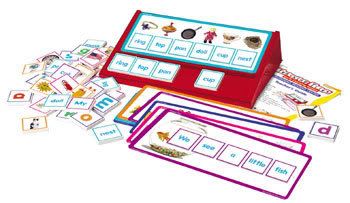
It is best to begin with easier words and then move on to more difficult ones. Five characteristics make a word easier or more difficult (Kameenui, 1995):
- The size of the phonological unit (e.g., it is easier to break sentences into words and words into syllables than to break syllables into phonemes).
- The number of phonemes in the word (e.g., it is easier to break phonemically short words such as no, see and cap than snort, sleep or scrap).
- Phoneme position in words (e.g., initial consonants are easier than final consonants and middle consonants are most difficult).
- Phonological properties of words (e.g., continuant such as /s/ and /m/ are easier than very brief sounds such as /t/).
- Phonological awareness challenges. (e.g., rhyming and initial phoneme identification are easier than blending and segmenting.)
Examples of phonological awareness tasks include phoneme deletion ("What word would be left if the /k/ sound were taken away from cat?"); Word to word matching ("Do pen and pipe begin with the same sound?"); Blending ("What word would we have if we blended these sounds together: /m/ /o/ /p/?"); phoneme segmentation ("What sounds do you hear in the word hot?"); phoneme counting ("How many sounds do you hear in the word cake?"); and rhyming ("Tell me all of the words that you know that rhyme with the word cat?") (Stanovich, 1994).
Beginning readers require more direct instructional support from teachers in the early stages of teaching. This is illustrated in the following example: The teacher models the sound or the strategy for making the sound, and has the children use the strategy to produce the sound. It is very important that the teacher model the correct sounds. This is done using several examples for each dimension and level of difficulty. The children are prompted to use the strategy during guided practice and more difficult examples are introduced. A sequence and schedule of opportunities for children to apply and develop facility with sounds should be tailored to each child's needs, and should be given top priority. Opportunities to engage in phonological awareness activities should be plentiful, frequent, and fun (Kameenui, 1995).



0 comments:
Post a Comment